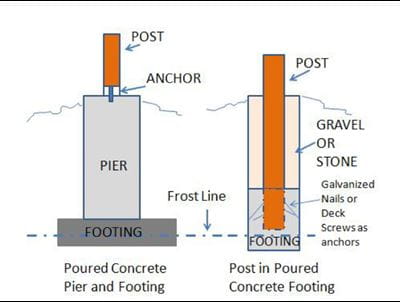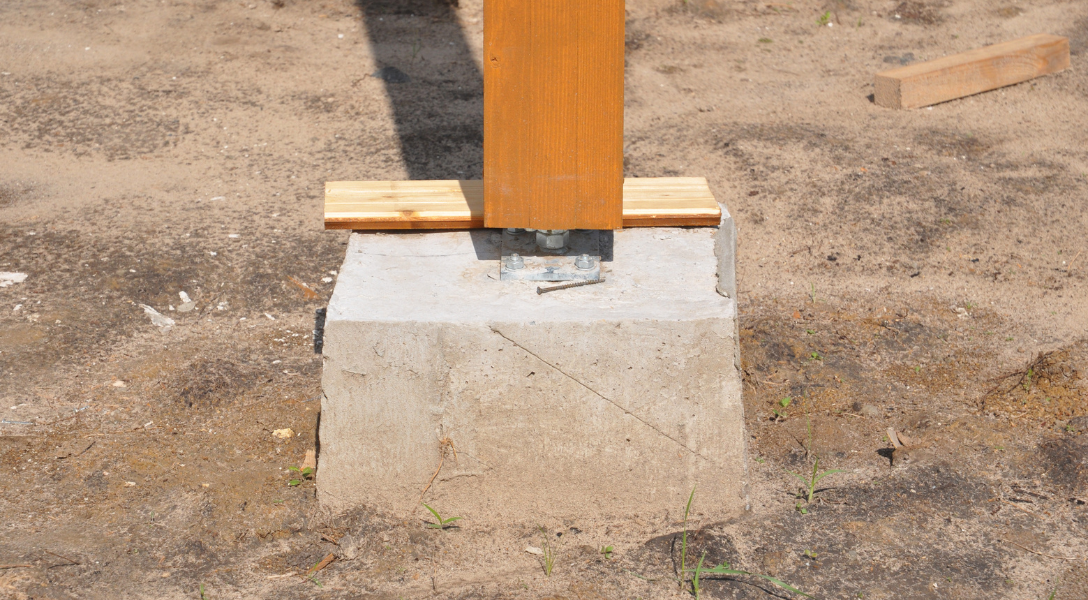Deck Footings Demystified: Guaranteeing Structural Stability for Your Outside Area
Structure a Solid Structure: Unveiling the Tricks of Deck Footing
When it involves developing a deck, one crucial element that typically goes overlooked is the foundation or ground. A properly designed and solid deck ground is necessary for the stability and long life of any deck structure. In this helpful overview, titled "Structure a Strong Foundation: Revealing the Secrets of Deck Footing," we will certainly explore the importance of correct footings, the different types offered, and the variables to think about when picking the right ones for your deck job. Additionally, we will give detailed guidelines on exactly how to prepare and install footings correctly. Finally, we will certainly discuss the value of normal upkeep and examination to guarantee the continued security and durability of your deck footings. Join us as we reveal the tricks to constructing a reliable deck foundation.
Value of Correct Grounds

Among the key reasons that correct grounds are critical is to avoid the deck from sinking or moving. Grounds that are not deep adequate or are poorly constructed can create the deck to settle unevenly or shift gradually. This can result in an unequal deck surface, creating a tripping threat and endangering the structural stability of the entire deck.

In addition, proper grounds additionally help to secure the deck from moisture damage. By boosting the deck framework in the air, footings protect against the wood from entering direct contact with wetness, reducing the danger of rot and decay.
Types of Deck Footings
The option of ideal deck grounds is a crucial aspect in guaranteeing the security and long life of a deck framework. There are numerous sorts of deck footings that can be utilized, each with its very own benefits and factors to consider.
One typical kind of deck footing is the concrete pier footing. This involves excavating openings in the ground and putting concrete to develop a strong structure for the deck. Concrete piers are functional and can be made use of in a selection of soil conditions, making them a prominent choice for many deck jobs.
An additional alternative is the helical pier ground. This kind of ground contains a steel shaft with helical plates that are screwed right into the ground. Helical piers are perfect for areas with poor soil problems or areas prone to high water tables. They supply exceptional security and can be adapted to the preferred height.
For decks improved flat or superficial foundations, a superficial footing may be proper. Shallow grounds are generally made of concrete and are positioned directly on the ground surface area. They are best suited for smaller sized decks or areas with secure soil conditions.
Factors to Take Into Consideration When Picking Grounds
When picking footings for a deck, it is vital to carefully take into consideration a number of aspects that will inevitably identify the security and toughness of the structure. Bigger decks with heavy lots or multiple degrees require even more substantial footings to supply adequate support. By thoroughly taking into consideration these elements, house owners can make informed choices when choosing footings for their deck, guaranteeing a secure and resilient framework.
Actions to Prepare and Install Grounds
To prepare and install footings for a deck, it is crucial to comply with a systematic strategy that guarantees stability and sturdiness. The first action is to figure out the size and number of grounds needed based upon the deck layout and local building codes. It is necessary to his comment is here excavate the soil to the required deepness, guaranteeing that all-time low of the footing hinges on uninterrupted soil or compressed crushed rock. The following action involves putting a concrete type tube or ground type in the opening, making sure it is degree and focused. The form should prolong above the ground level to stop water damage. After that, strengthening steel bars, or rebar, are positioned inside the type to give extra toughness. The rebar must be effectively secured and spaced according to the engineering requirements. As soon as the type and rebar are in location, concrete can be put right into the type, loading it to the top. The concrete needs to be combined and smoothed making use of a shovel or a concrete vibrator. The concrete requirements to cure for the advisable duration before any kind of additional building and construction takes area. By following these steps meticulously, one can ensure that the footings are appropriately prepared and set up, giving a solid structure for the deck structure.
Upkeep and Inspection of Deck Footings
To ensure the long-lasting stability and safety and security of your deck, normal maintenance and extensive examinations of the deck grounds are essential. The deck footings serve as the foundation of your deck, sustaining the weight and lots of the whole structure.
Normal maintenance must include aesthetic examinations of the footings, seeking signs of damage or deterioration. These can consist of fractures, sinking or shifting of the footings, or indications of water damage. In addition, it is very important to check the security of the footings by applying stress or conducting lots tests if necessary.
In addition to aesthetic inspections, it is advised to set up specialist assessments every couple of years. Experts can evaluate the architectural honesty of the footings extra properly and offer expert recommendations on any essential repairs or substitutes.
Furthermore, correct upkeep additionally involves taking preventive actions to safeguard the grounds (Deck Footings). This can consist of using water resistant layers to stop water damages, making sure correct drainage to avoid extreme moisture, and routine cleansing to eliminate debris and stop build-up
Verdict
Finally, appropriate deck footings play an important function in making sure the security and longevity of a deck. By understanding the various kinds of footings available and thinking about variables such as soil conditions and neighborhood building codes, property owners can make educated decisions when selecting grounds for their deck. Furthermore, routine upkeep and examination of deck footings is essential to recognize any possible concerns and make sure the security of the framework.
In this informative guide, titled "Structure a Strong Structure: Unveiling the Tricks of Deck Footing," we will certainly explore the value of correct grounds, the different types available, and view it the variables to why not check here take into consideration when selecting the appropriate ones for your deck job.One typical kind of deck ground is the concrete pier footing.To make sure the long-term security and security of your deck, routine upkeep and complete evaluations of the deck footings are essential.In final thought, appropriate deck grounds play an essential duty in ensuring the stability and longevity of a deck. By understanding the different types of footings readily available and thinking about variables such as dirt conditions and regional building codes, house owners can make informed decisions when selecting grounds for their deck.